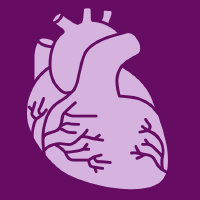Topic Menu
► Topic MenuTopic Editors
Extracorporeal Membrane Oxygenation (ECMO)
Topic Information
Dear Colleagues,
During the last decades, extracorporeal membrane oxygenation (ECMO) has been used to describe the use of extracorporeal cardiopulmonary support in the ICU. Over the years the use of ECMO has expanded from neonates to adults and consists of pulmonary, cardiac, or combined support. Initially ECMO was applied when patients were on maximal conventional support and were considered to be moribund. The initial results in the neonatal population showed a mortality reduction from the predicted greater than 90% risk of mortality to a greater than 50% survival rate. In 1989 the Extracorporeal Life Support Organization (ELSO) was voluntarily formed to pool data and knowledge from all active ECMO centers.
Our Topic, together with the journals (Journal of Cardiovascular Development and Disease, Journal of Clinical Medicine, Medicina, Membranes, Advances in Respiratory Medicine) provide a platform for researchers around the globe to share the novel and cutting-edge works about extracorporeal membrane oxygenation. Topics include, but are not limited to, the following: extracorporeal CO2 removal, extracorporeal life support, membrane biocompatibility, ECMO transportation, anticoagulation strategies, membrane imaging. Authors are invited to submit their latest results: original research papers, reviews (narrative, systematic), or case reports are welcome.
Prof. Dr. Patrick Honore
Prof. Dr. Isabelle Michaux
Topic Editors
Keywords
- extracorporeal membrane oxygenation (ECMO)
- extracorporeal CO2 removal
- extracorporeal life support
- membrane biocompatibility
- anticoagulation strategies
- ECMO transportation
Participating Journals
| Journal Name | Impact Factor | CiteScore | Launched Year | First Decision (median) | APC | |
|---|---|---|---|---|---|---|

Journal of Cardiovascular Development and Disease
|
2.4 | 2.6 | 2014 | 22.9 Days | CHF 2700 | Submit |

Journal of Clinical Medicine
|
3.0 | 5.7 | 2012 | 17.3 Days | CHF 2600 | Submit |

Medicina
|
2.4 | 3.3 | 1920 | 17.8 Days | CHF 2200 | Submit |

Membranes
|
3.3 | 6.1 | 2011 | 16.6 Days | CHF 2200 | Submit |

Advances in Respiratory Medicine
|
1.8 | 2.6 | 1909 | 25.3 Days | CHF 1300 | Submit |

MDPI Topics is cooperating with Preprints.org and has built a direct connection between MDPI journals and Preprints.org. Authors are encouraged to enjoy the benefits by posting a preprint at Preprints.org prior to publication:
- Immediately share your ideas ahead of publication and establish your research priority;
- Protect your idea from being stolen with this time-stamped preprint article;
- Enhance the exposure and impact of your research;
- Receive feedback from your peers in advance;
- Have it indexed in Web of Science (Preprint Citation Index), Google Scholar, Crossref, SHARE, PrePubMed, Scilit and Europe PMC.



